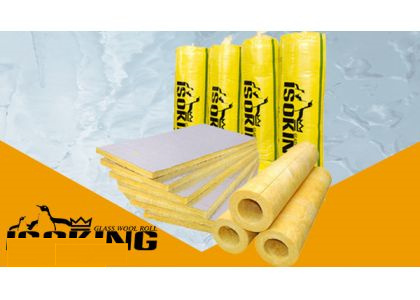
Glass wool is preferred for thermal insulation. Glass wool is a kind of thermal insulation and sound-absorbing material in the form of plate, felt and pipe. It is obtained by mixing very fine glass fiber with a certain amount of adhesive and curing molding process.
Several important indexes of glass wool
Density: commonly used densities are 12, 14, 16 and 20
Thickness: commonly used thickness: 50, 100, 120
Fiber diameter: the smaller the fiber diameter, the better the insulation effect. The more uniform the fiber diameter distribution, the better the product quality. The ideal fiber distribution structure should be that the fibers are parallel to the surface and evenly distributed.
Combustion performance: class a non combustible
Thermal conductivity (thermal resistance): thermal conductivity refers to that under stable heat transfer conditions, the temperature difference on both sides of a 1m thick material is 1 degree, and the heat transferred through a m2 area within 1 hour is expressed in watts / meter degrees (w / MK).
Thermal resistance: all building materials will hinder the flow of heat energy to a certain extent. The ability to block heat flow is measured by thermal resistance. The higher the thermal resistance value, the more effective it is to prevent heat flow, and the more energy costs will be saved and the more comfortable it will be. Thermal resistance represents the resistance to heat flow and is an index to measure the thermal insulation capacity of any material. Thermal resistance = thickness / thermal conductivity. The smaller the fiber diameter, the greater the thermal resistance.
Hydrophobicity: hydrophobic agent will be added to glass wool adhesive. This hydrophobic agent will prevent water from entering the insulation cotton. When water falls on the surface of thermal insulation cotton, the tension of water molecules will increase, and water will adhere to the surface of cotton, which is not easy to penetrate into the interior of cotton. But it can't stop water vapor from entering.
Slag ball content: 0%. There will be slag balls inside the glass wool with poor quality, which will greatly affect the performance of thermal insulation cotton.
Rebound rate: glass wool mainly exists in the form of rolled felt and will be compressed during packaging. It will be transported from the factory to the construction site and can be restored to its original thickness after opening during use.